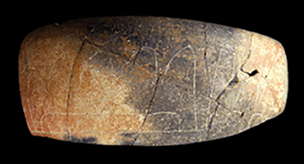Crossref Citations
This article has been cited by the following publications. This list is generated based on data provided by
Crossref.
Walden, John P.
Ebert, Claire E.
Hoggarth, Julie A.
Montgomery, Shane M.
and
Awe, Jaime J.
2019.
Modeling variability in Classic Maya intermediate elite political strategies through multivariate analysis of settlement patterns.
Journal of Anthropological Archaeology,
Vol. 55,
Issue. ,
p.
101074.
Douglas, John E.
MacDonald, Brandi L.
Ebert, Claire E.
Awe, Jaime J.
Dussubieux, Laure
and
Klesner, Catherine E.
2021.
Fade to Black: The implications of Mount Maloney Black pottery from a Terminal Classic deposit, Cahal Pech, Belize, using a comparative multi-method compositional approach.
Journal of Archaeological Science: Reports,
Vol. 35,
Issue. ,
p.
102666.
Ting, C.
Źrałka, J.
and
Hermes, B.
2021.
Maya Pottery Production at Nakum, Guatemala, during the Protoclassic Period (100/50 BC – AD 300/350).
Archaeometry,
Vol. 63,
Issue. 6,
p.
1192.
Cagnato, Clarissa
2021.
GATHERING AND SOWING ACROSS THE CENTRAL MAYA LOWLANDS: A REVIEW OF PLANT USE BY PRECERAMIC PEOPLES AND THE EARLY TO MIDDLE PRECLASSIC MAYA.
Ancient Mesoamerica,
Vol. 32,
Issue. 3,
p.
486.
Awe, Jaime J.
Ebert, Claire E.
Stemp, W. James
Brown, M. Kathryn
Sullivan, Lauren A.
and
Garber, James F.
2021.
LOWLAND MAYA GENESIS: THE LATE ARCHAIC TO LATE EARLY FORMATIVE TRANSITION IN THE UPPER BELIZE RIVER VALLEY.
Ancient Mesoamerica,
Vol. 32,
Issue. 3,
p.
519.
Jordan, Jillian M.
Davenport, James A.
Goodwin, Whitney A.
MacDonald, Brandi L.
Ebert, Claire E.
Hoggarth, Julie A.
and
Awe, Jaime J.
2022.
Volcanic Ash Tempered Pottery Production in the Late to Terminal Classic Belize Valley, Belize.
Latin American Antiquity,
Vol. 33,
Issue. 3,
p.
556.
Pugh, Timothy W.
2022.
Social Complexity and the Middle Preclassic Lowland Maya.
Journal of Archaeological Research,
Vol. 30,
Issue. 4,
p.
545.
